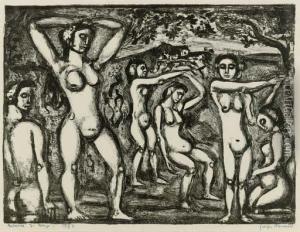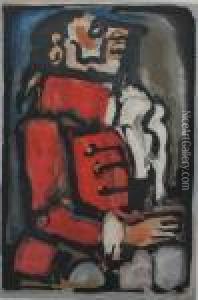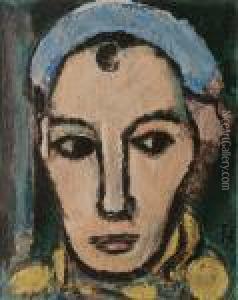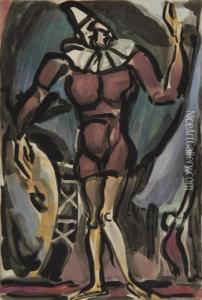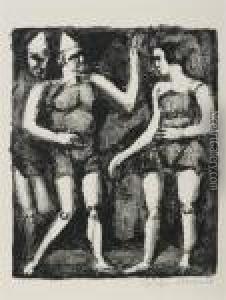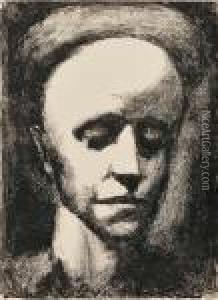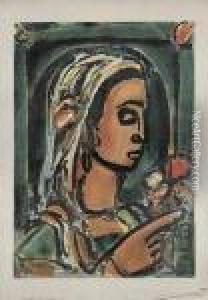Georges Rouault Paintings
Georges Rouault was a French painter, draughtsman, and printmaker, whose work is often associated with Fauvism and Expressionism. Rouault was born on May 27, 1871, in Paris, into a poor family. Despite the early death of his mother and the financial struggles he faced, Rouault developed a passion for art at a young age. He initially apprenticed as a glass painter and restorer, which influenced his later work with its strong outlines and luminous colors.
His career took a significant turn when he entered the École des Beaux-Arts in Paris under the guidance of Gustave Moreau, a Symbolist artist who had a profound impact on Rouault's artistic style and choice of subjects. Moreau's emphasis on personal expression and spiritual themes resonated with Rouault, who was deeply religious. After Moreau's death in 1898, Rouault became the curator of the Moreau Museum in Paris, preserving his mentor's legacy while continuing to develop his own artistic voice.
Rouault's early works were characterized by a somber palette and focus on the human condition, often depicting clowns, prostitutes, and judges as symbols of human suffering and moral corruption. His style evolved to include thicker applications of paint, vivid colors, and a rough, almost crude, expressionistic handling of the human figure. This stylistic evolution aligned him with the Fauvists for a time, though his work was distinct for its darker themes and social commentary.
Throughout his career, Rouault faced critical ups and downs, with periods of both acclaim and neglect. However, he remained committed to his artistic vision, which was deeply informed by his Catholic faith. His series of paintings 'Miserere et Guerre' is considered a masterpiece, reflecting his anguish over World War I and the human condition.
Later in his career, Rouault turned to printmaking, creating a significant body of work that included etchings and lithographs. His prints continued the themes of his paintings, exploring human nature, religion, and society with a compassionate but unflinching eye.
Georges Rouault died on February 13, 1958, in Paris. He left behind a substantial body of work that continues to be studied and exhibited around the world. His art remains a testimony to his belief in the redemption of humanity through suffering and the transformative power of faith.

